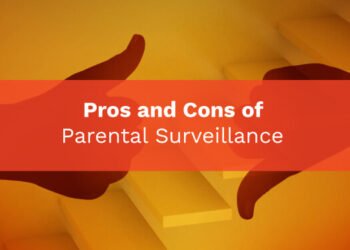Cyber-attacks are increasing day by day and generating further threats to organizations and people’s financial and personal lives. Cybersecurity is the best defense for such cyber-attacks. An effective and strong cybersecurity scheme has several layers of security distributed through computers, systems, servers, and software. Based on the type of network and the cyberattacks one is vulnerable to, several practices can be applied to ensure cybersecurity.
Table of Contents
Children are at Higher Risks than Ever
Now more than ever before, we should be aware of online security and protection. The corona outbreak has pushed millions of people to solely depend on the Internet to engage and interact with the outside world. It’s not just the parents who are required to cope with the current home-based work environment but the children too have turned to online classes for study purposes.
Overlooking the current scenario of rapid technological advancement, children are more into the Internet to keep themselves updated, document their life, fun activities, educational purpose, and communication and hence they face significant risks as they are more likely to get targeted by cybercriminals. Apart from cyber criminals , the content on internet has some effects on kids.
Therefore, parents should be responsible for enabling their children a good understanding of how to protect and defend their online personalities and crucial digital footprints. It is crucial to advise kids to use strong login passwords, be careful of unusual applications and messages to prevent them from cyber-attacks or cyberbullying.
Role of School to Teach Cybersecurity to Kids

Schools play a major role in educating the basic principles. But in the age where the Internet is everything, children from an early age should also be taught about the possible threats they could face using it and the fundamentals of secrecy, and the technologies that ensure their safety. Sometimes parents may not be aware of safety online and make mistakes.
Teachers should teach practical skills and the essential habits related to cybersecurity to the children so they can escape the potential risks of cyber-attacks. Children should at the minimum be taught to keep their details confidential, avoid outsiders and disclose anything suspicious to their elders.
Reasons Why You Should Teach Kids about Cybersecurity | Importance of Cybersecurity
1. Cyberbullying:
Bullying is not a new thing, this has been going on in every corner of the world. However, in the last few years cyberbullying has become a huge concern. Hundreds of young people fall under the victims of cyberbullying. Cyberbullying is comparatively a lot easier and a lot more threatening than bullying in school. It happens anonymously online on a larger scale.
Victims of cyberbully can have severe emotional and psychological consequences. Cyberbullying activities include making bad comments, spreading rumors, people even make fake profiles, and imitate others to undermine their online reputation.
2. Privacy:
Voluntarily or involuntarily, almost all of us add to an increasing image of who we are digitally nearly every day. Any passive online activities, communications, tweets, articles, pictures we post, information shared online leaves a footprint of who are.
Most of us keep our social media accounts private but hackers have several ways to get access to our private accounts. A portrait of oneself is undoubtedly perhaps more public and not as anonymous than what many of us expect.
3. ID theft:
Many youngsters are into online shopping today. But they aren’t aware that all the shopping websites aren’t secure. Children give out the account details of their parents on the websites irresponsibly to continue the purchase order and this ends up in the parent becoming the victim of ID theft or fraud.
The person involved in such cybercrime empty the bank accounts. Therefore, it is very significant to educate children to distinguish between a safe site to a non-safe site.
4. Trace location:
Turning the location services on is useful because, in case of theft or loss of the devices, one can easily track the devices. It is quite also useful to have it switched on when using GPS for particular directions. But several risks and dangers also come with it. The way how you can track your lost devices, any stalker or person who is trying to get to you can track your location likewise.
Similarly, children often document their life through social platforms. They tend to post pictures wherever they go, this enables anyone to know their current location. No one would ever want to warn any chaser or stalker about your location or a robber if you are at home or somewhere out. So it is best to have your location turned off on the devices to ensure safety.
5. Stranger danger:
In the digital era, social networking and having a considerable number of friends and followers on social platforms is the current trend. When it comes to Instagram, Facebook, etc people love to see a lot of followers and hence they end up accepting every person’s friend and message requests. Cybercriminals approach trustworthy friends and end up harming them. The safest approach would be to reject messages from outsiders.
Children Must be Aware that
- Once anything is online, you can’t erase it,
- Never post inappropriate pictures of oneself/others not make ill comments on others online,
- Engaging oneself in online crimes will steer up a bad reputation which will affect their college admissions,
- Do not be friends or talk to any outsider,
- Use the privacy options provided accurately to keep your information and activities private,
- Always find an adult while in need, trouble, or concern.
Conclusion
Kids can learn basic cybersecurity skills as quickly as they pick up new technologies. It is up to the parents and teachers to teach cybersecurity to kids. Once children are educated and aware of cybersecurity. Children can protect themselves from potential cybercrimes and be cybersecurity experts themselves gradually.
















